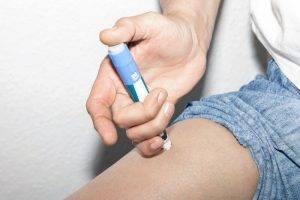Have you ever cringed or felt nauseous when looking at clusters of holes? Trypophobia, or a fear of holes, is a term that was coined in the early 2000s. As yet, it is not an official condition or medical term and there are limited studies on the subject. However, many individuals describe feeling extreme discomfort when they encounter a cluster of tiny holes or bumps that are grouped together. This definitely makes trypophobia an interesting topic for further studies.
What does trypophobia mean?
Trypa originates from the Greek word for “grilling” or “hole”. A case report in 2018 defined trypophobia as the fear of repetitive clustered patterns of holes, protrusions or bumps. Such fear can be a normal response to perceived danger, but it turns into a phobia when it becomes excessive, disproportionate and persistent in nature, or if it interrupts the daily life of the affected individual.
What are the common triggers?
Some common objects with repetitive holes and bumpy patterns that may trigger individuals with trypophobia are:
- Lotus seed pods
- Fruit seeds
- Sea sponges
- Honeycombs
- Strawberries
- Holes or bumps on skin or flesh
- Bubble wrap
- Man-made patterns full of spots and holes
- Corals
- Cantaloupe/melon
Less common situations or objects that might trigger trypophobia include:
- Bread with holes
- Gruyere or swiss cheese
- Pancake with tiny holes
- Surinam toads
What are the effects or symptoms of trypophobia?
The usual bodily reactions to trypophobia are similar to those of other phobias. They are the following:
- Fear and anxiety
- Increased heart rate and rapid breathing
- Nausea
- Goosebumps
- Dry mouth
- Paleness of skin
- Sweating
- Agitation
- Vomiting
Why is it not an official medical term yet?
The phobias that have been established are those that cause significant disability or distress in a person’s day-to-day functions. An example of this is not being able to ride an elevator or airplane due to fear of closed spaces or claustrophobia.
When it comes to trypophobia, most people report disgust, rather than fear of clustered holes. Studies say that this “disgust” with repetitive patterns of holes is likely due to its association with potentially harmful mammals, sea creatures, and other organisms.
It also mimics infectious diseases such as chickenpox, scabies, and measles. They do not fear the hole as it is, but what it resembles. But, more and more people are expressing their stories about how sickening it feels that it takes days for them to recover. Some doctors say that is not always a pathological phenomena but rather a matter of visual preference.
What are the risk factors?
So far, published studies associate trypophobia with generalised anxiety disorder, social anxiety disorder, and major depressive disorder. A peer-reviewed study in 2017 linked it with people diagnosed with social anxiety disorder. Such individuals, fear being criticised or being the centre of attention and they perceive the cluster of holes, specifically eye figures, as gazing or being fixed at them. Their natural response is to avoid or be repulsed by it.
A study published in 2010 also suggested that it can be a learned behaviour. When a person, especially at a young age, sees another person make an aversive reaction to the cluster of holes, they become predisposed to acquiring the same response when presented with a similar object or pattern.
How to diagnose trypophobia?
Psychiatrists will explore the individual’s family history, past and present medical history, similar to diagnosing other medically established phobias. It is then categorised into mild or severe depending on the extent of the individual’s reactions or coping mechanisms.
How is trypophobia treated?
Approach to treatment may include the following:
Cognitive behavioural therapy with exposure
This is the process of unlearning and relearning reactions with a specialised therapist by progressively exposing the person to the unwanted stimuli while applying relaxation techniques. The goal is for the stimuli to become less threatening or a desired and more appropriate response is achieved. It can be through vivo exposure (real life), imaginal exposure (imagination), or through virtual reality (computer).
Pharmacotherapy
Medication is usually not the first-line treatment, but if it becomes necessary, benzodiazepine is usually prescribed. It’s side effects include sedation and the possibility of being abused and developing a dependence.












